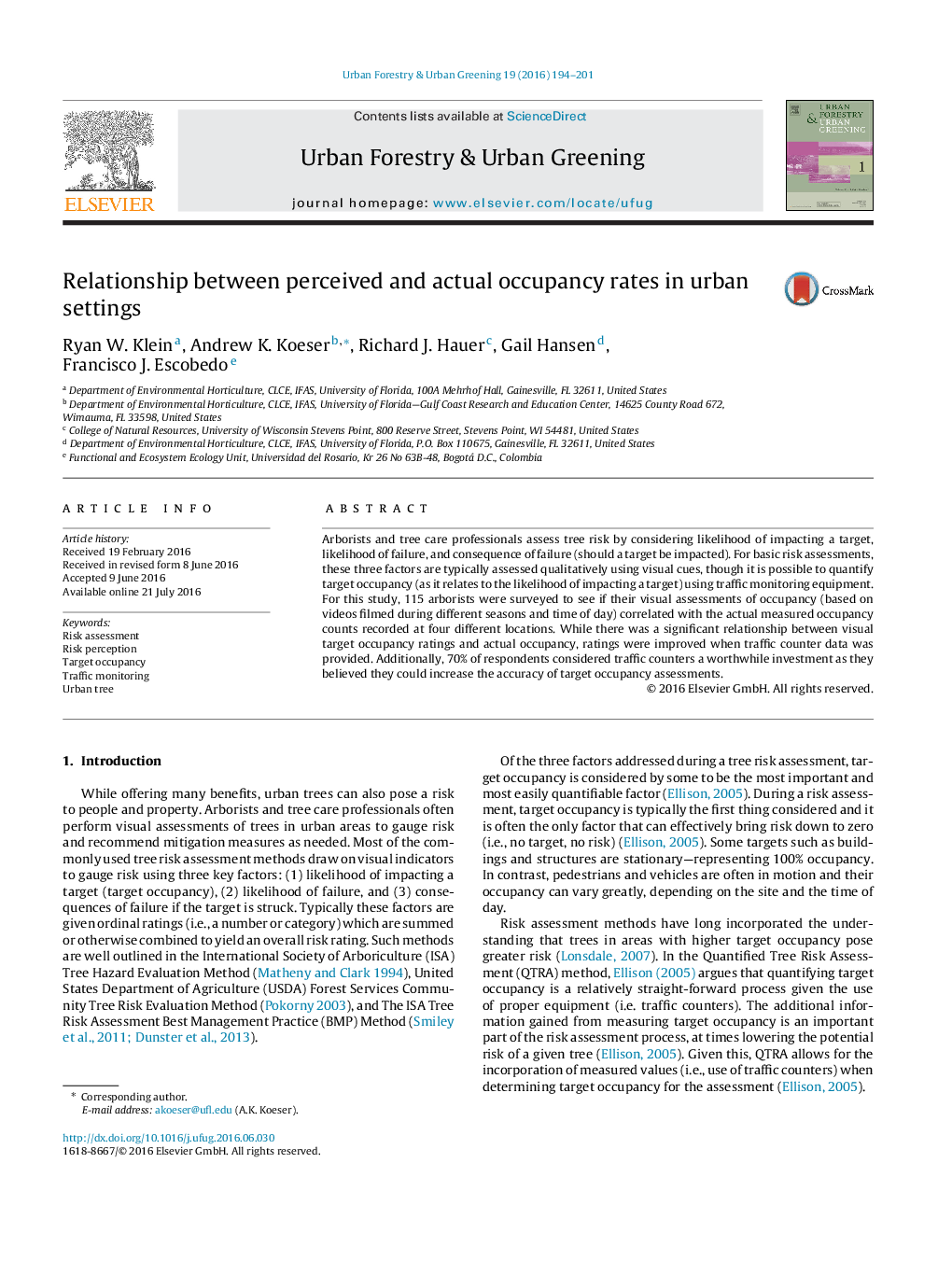| کد مقاله | کد نشریه | سال انتشار | مقاله انگلیسی | نسخه تمام متن |
|---|---|---|---|---|
| 93930 | 160238 | 2016 | 8 صفحه PDF | دانلود رایگان |
• While traffic counters have the potential to help quantify target occupancy for use in tree risk assessments, their use is not common—especially outside of the United Kingdom and Australia.
• In contrast with traffic counter data, visual assessments of target occupancy do not capture daily or seasonal changes in traffic flows.
• When arborists rated target occupancy based on visual cues alone, time of day (peak vs non-peak traffic time) significantly influenced ratings.
• Nearly 70% of respondents believed there was value in using traffic monitoring systems when evaluating target occupancy.
Arborists and tree care professionals assess tree risk by considering likelihood of impacting a target, likelihood of failure, and consequence of failure (should a target be impacted). For basic risk assessments, these three factors are typically assessed qualitatively using visual cues, though it is possible to quantify target occupancy (as it relates to the likelihood of impacting a target) using traffic monitoring equipment. For this study, 115 arborists were surveyed to see if their visual assessments of occupancy (based on videos filmed during different seasons and time of day) correlated with the actual measured occupancy counts recorded at four different locations. While there was a significant relationship between visual target occupancy ratings and actual occupancy, ratings were improved when traffic counter data was provided. Additionally, 70% of respondents considered traffic counters a worthwhile investment as they believed they could increase the accuracy of target occupancy assessments.
Figure optionsDownload as PowerPoint slide
Journal: Urban Forestry & Urban Greening - Volume 19, 1 September 2016, Pages 194–201
